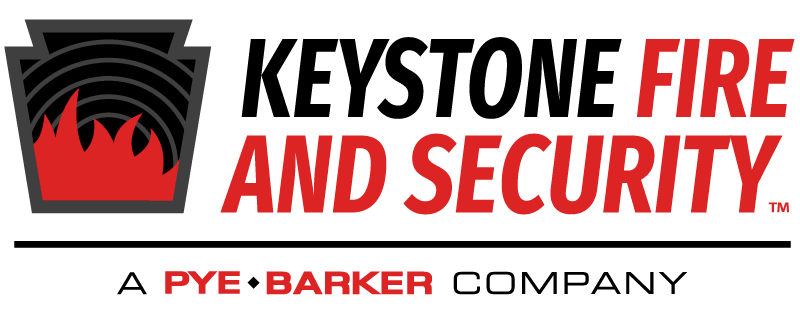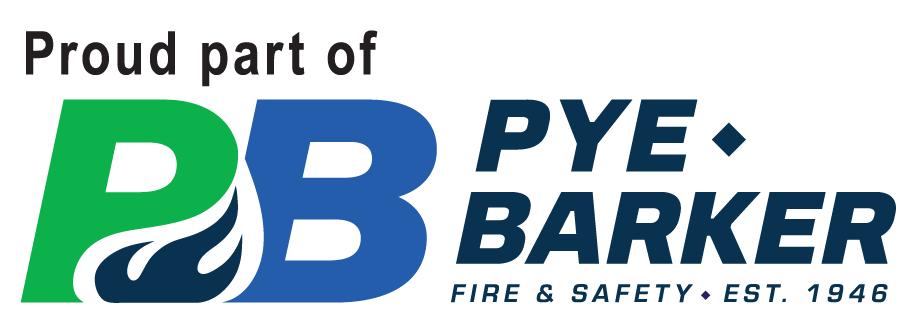Along with having several requirements related to sprinkler systems and fire extinguishers, the Occupational Safety and Health Administration (OSHA) has a number of regulations related to fire alarms as well. At their core, these regulations are geared at ensuring that an alarm system will properly alert individuals in the event of a fire and encourage people to leave a dangerous situation.
However, failure to comply with OSHA’s fire alarm regulations can cause a facility to fail their fire safety inspection and could also lead to a citation or a substantial fine. Defective fire alarms could also place employees in serious harm if a fire were to break out. For these reasons, adhering to OSHA’s requirements not only protects an employer from paying a fine but also protects your employees from fire-related emergencies. Here is how you can keep your alarm system in check with OSHA’s regulations and be sure to pass your next fire safety inspection.
OSHA Fire Alarm Requirements and Common Violations
OSHA’s fire alarm regulations can essentially be divided into three basic categories: ensuring that the alarm system is recognizable and accessible, proper installation and restoration, and regular testing and maintenance. Common violations often stem from an employer’s failure to satisfy the requirements in any one of these categories.
In terms of ensuring that the alarm systems are recognizable and accessible, OSHA has a number of requirements. These include:
- The alarm must be able to be heard above ambient noise by all employees in the workplace.
- The alarm must be recognizable as a signal to evacuate the work area or carry out an emergency response.
- The employer shall establish procedures for sounding emergency alarms in the workplace.
- The alarm system must provide a warning necessitating an emergency action or ensuring the safe escape of employees from the workplace.
As a result, violations often occur in this category of regulations when the alarm system inadequately alerts employees of a potential fire hazard, or if the alarm system cannot be heard by all employees in the immediate area. Employers can also violate OSHA alarm regulations when they have failed to establish procedures for sounding emergency alarms or because the alarm system lacks a distinctive warning that encourages employees to evacuate or initiate an emergency response.
When it comes to complying with OSHA regulations related to alarm system installation and restoration, OSHA has three main rules. First, the employer must assure that all devices and componentsof the alarm systems are constructed or installed properly. Secondly, employers must make sure that the alarm systems are restored to normal operating condition as soon as possible after each test or alarm. Finally, OSHA requires that spare alarm devices and components must not only be available in sufficient quantities but also must be available in various locations to allow for the prompt restoration of the system if needed.
Consequently, a violation of these rules results when a fire alarm system has been improperly installed or if an alarm system has not been properly reset after the alarm has either gone off or was tested. Employers may also run into trouble if they fail to have replacement parts for their alarm system or if those replacement parts have deteriorated over time, making them essentially useless.
Finally, OSHA has implemented a number of regulations when it comes to making sure the facility’s fire alarm system is regularly tested and maintained. Those regulations include the following basic rules:
- Employers are responsible for ensuring that the alarm system is maintained in operating condition (unless it is currently undergoing repairs or maintenance).
- Employers must maintain or replace power supplies as often as is necessary to assure the alarm systems are fully in operational condition.
- Back-up methods of alerting employees of an emergency situation, such as employee runners or telephones, must be implemented when regular alarm systems are out of service.
- Alarm systems must be regularly tested, and all servicing, maintenance and testing of alarm systems must be done by trained individuals.
- Employers must make sure that all manually operated aspects of the alarm system (e.g. pull boxes) are unobstructed, conspicuous and readily accessible.
Therefore, maintenance and testing violations occur when employers fail to keep records of regular testing completed by a trained individual or by failing to have a back-up alarm system in place if the regular alarm system is currently being repaired or out-of-order. Employers may also fail their fire safety inspection if an alarm system or the power source responsible for powering the alarm system has not been properly maintained, and consequently, is not working to its fullest potential. Finally, employers have committed an OSHA violation when they have obstructed the alarm system in a manner that makes it difficult or even impossible for an individual to trigger the alarm system in the event of a fire.
How to Avoid OSHA Fire Alarm System Violations
There are a number of things employers can do to avoid an OSHA violation when it comes to their facility’s fire alarm system. One of the easiest things an employer can do is create a monthly calendar reminder to have the alarm systems inspected, reset or tested. While the main system is being inspected, it is also prudent for the employer to check all of the back-up systems, power sources, and replacement components to make sure that they have not worn out or become ineffective.
May employers may also find it useful to create an inspection checklist that includes a number of components required to be in compliance with OSHA’s regulations. For example, the checklist should include reminders to make sure that pull boxes and alarm triggers are unobstructed and clearly marked. The checklist should also include reminders to make sure that the alarm is loud enough for employees can hear it properly and will adequately alert employees to either evacuate the building or initiate an emergency response. Employers should also double-check that all new employees have been educated on the proper method of triggering the alarm system and are aware of the proper protocol in the event of a fire.
Finally, employers should not hesitate to work with a fire safety specialist to make sure that all of the components of their fire alarm systems are in proper working order and in full compliance with OSHA’s fire safety regulations. A fire safety specialist will not only be familiar with what OSHA requires when it comes to fire alarm systems, but also will have the expertise necessary to address any potential shortcomings with a particular alarm system. Working with a fire safety specialist will guarantee that your alarm system is meeting all of the necessary OSHA requirements and provide confidence that you will pass your next fire safety inspection.
Fire alarm systems are necessary to ensure a safe workplace for you and your employees. OSHA’s regulations make sure that those safety standards are upheld and implemented. By following OSHA’s requirements, you’ll avoid the consequences of a potential violation and help keep your employees protected in the event of a fire.

